It’s that time of year again: time to map out your race schedule for the next 12 months, and decide which races to do, and which ones won’t make the cut in 2019. There’s no shortage of races, varying in size, distance, location and season, throughout the year to choose from. Some got plenty of well-deserved attention, like big city races—Ottawa, Toronto, Vancouver, Calgary, we love you!—while others (to each their own), deserve more attention because of their history, character and uniqueness.
We’ve narrowed the list down to 12, one for each month of the year, from as far west as Vancouver and as far east as Cape Spear, N.L., the easternmost place in North America. Races are in chronological order. Good times, fun times, guaranteed.
1. Robbie Burns 8K

Jan. 27, 2019 – Burlington, Ont.
The Robbie Burns 8K is Ontario’s first road race of the year, with crowds from in and around the Greater Toronto Area huddling inside Burlington Central High School before bagpipers play their instruments to signal it’s time to head to the start line. From the hot post-race oatmeal to the abundance of kilts and best-dressed award, the event, named for the well-known Scottish poet and lyricist, has it all. Beyond amenities and character, the race is held on a flat, single-loop course through residential Burlington, Ont. Because of unpredictable weather, you may get a warmer day, like in 2018, which was shorts-weather appropriate, or you may get a bone-chilling January morning. The race length, 8K, is rarely-contested so the Robbie Burns Road Race is a prime opportunity to set a PB at a new distance.
The 2019 edition marks the 40th anniversary of the race. It’s popular so sign up now, like, right now!
2. First Half Half-Marathon
Feb. 10, 2019 – Vancouver
Half marathons in Vancouver are few and far between. Despite the city being a runner’s paradise, there are limited races over 10K. (Reminder: Vancouver has one marathon.) To motivate you this winter, the First Half Half-Marathon is self-explanatory, it’s the first 21.1K of the calendar year. This year will be a big one: the race celebrates its 30th anniversary. (Although the race has not been held a number of times, including most recently during the 2010 Winter Olympics and in 2017, due to heavy snow.)
The race’s original purpose was to serve as a tune-up for the Vancouver Marathon, held annually in May. To this day, that remains true, as a half-marathon in the lead-up to a marathon is often recommended as it keeps you race-ready and breaks up the monotony of marathon training. New this year is RUNVAN, the hosts of the Vancouver Marathon, will organize the First Half Half-Marathon. The course’s scenery cannot be beat, especially considering much of the country is blanketed in snow at the time of the First Half, while racers in Vancouver can be spotted wearing short sleeves and shorts. The 21.1K heads out to the Seawall, English Bay, around Stanley Park and then back to the Roundhouse Community Centre. You’ll love it.
3. St. Patrick’s Day Road Race (5K)
March 16, 2019 – Vancouver
Known as Vancouver’s ‘Best Running Party,’ the St. Patrick’s Day Road Race is not unique for being a St. Patrick’s-themed event; those happen across the country in major cities. Rather, the post-race green-themed party at Stanley Park Pavilion, in the heart of Canada’s most famous park, is particularly memorable. The post-race celebration features drinks from Granville Island Brewing, including infamous green beer. For car-enthusiasts, Ferrari Maserati of Vancouver is the official pace vehicle sponsor. Plus, the 5K is a standalone distance, meaning everyone on the start line is in for the same distance. And the race is affordable, with race fees as low as $30.
The venue location features plenty of parking nearby and the race also has a bag check by donation. The course itself is one of the fastest in Canada, including a fast downhill start before the route winds around Stanley Park via Stanley Park Drive, passing by the Harry Jerome Statue, Brockton Point Lighthouse, the Totem Poles and Girl in a Wetsuit before finish line after an ascent up Pipeline Road. Spend the afternoon in the park with a trip to the Vancouver Aquarium, located steps from the start/finish line.
4. Beat Beethoven (8K)

June 2019 – Kingston, Ont.
Kingston, Ont.’s Beat Beethoven is a particularly quirky race. When the race begins, the Kingston Symphony plays Beethoven music for 50 minutes and runners are tasked with completing the 8K before the music concludes. The race, which the local Kingston Road Runners Association hosts, has been going on for more than two decades, often attracting the fastest locals.
The course itself is flat and passes through mostly residential areas finishing near the downtown core of the historic town, home to Fort Henry, a popular venue for cross-country running. It’s not the cheapest race – $45 fee for the 8K as of 2018 – but there’s limited races in the Kingston area throughout the summer and the timing of Beat Beethoven is just in time before the hot and humid conditions peak during the summer.
The concept itself is not unique. Run Calgary, the organizers of the Calgary Marathon, hosted a Beat Beethoven-themed race in 2018 (after a recon to Kingston to check out the event a previous year), and the event returns on Sept. 12, 2019. (Ottawa used to host a Beat Beethoven event, too.) Interestingly, the Calgary event is on a weekday, freeing up your weekend morning when races are almost universally held.
5. Kananaskis 100-Mile Relay
June 22, 2019 – Longview, Alta.
You can imagine any race in the Rocky Mountains is tough. Yet beautiful. The Kananaskis 100-Mile Relay is split into 10 legs of varying distance, and of varying difficulty, beginning in Longview, Alta., in the southwest corner of the province. From there, the relay finishes at Nakiska Ski Area, site of alpine events at the 1988 Winter Olympics.
Along the way, the route passes along Highway 40 and at the base of stunning snow-capped mountains on rolling roads that make your legs burn oh-so-badly. Memorable points on route include Highwood Pass, the highest paved road in the country. But it’s not just the ups that hurt. Often times, it’s the downhills that punish the legs the most, and the K-100 has a lot of both. Hopping into a vehicle for hours on end after you race doesn’t help, but relay races are truly everything that’s great about running: camaraderie, struggle, resiliency and fulfillment.
The rural relay requires participants to carry bear spray and some legs are off-road. Because of capacity restrictions, the race, often referred to as K-100, is capped at 100 teams.
Bonus mentions go to the Rum Runners Relay and the Whistler 50. (The Cabot Trail Relay is in there too, but is the most mainstream of all the relays in Canada, except for perhaps the Ragnar Relay.)
6. Canada Day Road Race (5K/10K)
July 1, 2019 – Ottawa
There’s no better place to spend Canada Day than in the nation’s capital. And for runners, there’s few better ways to start the day’s festivities than with a road race. Run Ottawa, the same folks who put on Ottawa Race Weekend, annually host the Canada Day Road Race in Kanata, just west of downtown. Held in a residential area, the 5K and 10K courses run on partially closed roads, which is problematic on busier streets, but much of the course runs through quieter neighbourhoods where vehicle traffic is not as big of issue.
In typical Ontario fashion, the weather can be wildly unpredictable. In 2017, the race experienced an intense downpour seconds before the start, resulting in knee-deep puddles near the finish line. Often times though, heat and humidity are the norm. Such is the running life.
7. Not Since Moses (5K/10K)
Aug. 4, 2019 – Five Islands, N.S.
Perhaps the most interesting race in all of Canada, if not the world, Not Since Moses is unlike any race you’ve ever heard of before. The course itself is accessible for just hours each year. How? Well, that’s because the Bay of Fundy tides retreat just enough to allow for runners to cross the ocean floor. The Bay of Fundy features the world’s highest tides, and, twice a day, 160 billion tonnes of sea water flow in and out of the bay.
On race day, the tides recede enough to expose the ocean floor making it a muddy and wet adventure. The course itself is unaltered so be prepared for mud, barnacles, sand and rocks. Come prepared with your not-so-best-shoes as they’ll be mud-caked. As many as 1,000 runners take part in the event, and expect an appearance from Moses himself on course.
All participants meet at Five Islands before being bussed to either the 5K or 10K start. Oh, and in case it wasn’t clear, this race is not for PB-purposes, it’s meant entirely for the experience so make sure to take in the surroundings and the fact that few people take steps on the ground of the race course. (It’s not exactly easily accessible, after all.)
8. Natal Day Road Race (6 Miles)
Aug. 5, 2019 – Dartmouth, N.S.
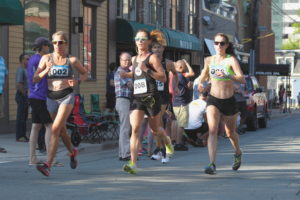
One of the oldest races in Canada, let alone North America, the Natal Day Road Race started in 1907, and has been continuously run ever since, with the exception of a few years during the First and Second World Wars. The Natal Day Road Race is a unique distance: 6 miles (not quite 10K, but close), comprising of two-mile loops in Dartmouth, N.S., adjacent to Halifax. The race is named after the Civic Holiday in Nova Scotia commemorating the founding of the founding of Halifax-Dartmouth. Because it’s held on the Civic Holiday, the race falls on a Monday, like Boston, one of the rare Monday races on the road running circuit.
The race entry fee is just $20, unlike Boston, putting it on par with MEC races, which are notoriously low-priced, while offering the necessities of a race. The event is part of the Run Nova Scotia Performance Series so if you’re a racer, it’s one of a number of top-tier Nova Scotia road races held throughout the year.
9. Whistler Alpine Meadows (Ultra), pictured above.
Sept. 20-22, 2019 – Whistler, B.C.
From the masterminds behind the Squamish 50, Whistler Alpine Meadows is one of the number of races in the Coast Mountain Trail Series. The Squamish 50 sells out within hours every year, and gets plenty of well-deserved attention. But, Whistler Alpine Meadows may be even tougher than the ultra-popular Squamish 50. New this year, is a 175K distance as part of Whistler Alpine Meadows, held in one of the most coveted spots in North America, and one of the premiere ski resorts on the continent.
WAM features a 25K, 55K, 110K and the all-new 175K. Plus, and perhaps most interestingly, Whistler Alpine Meadows features an ascent race, a brutal all-uphill 13.8K straight up Whistler Mountain. The ascent race climbs a brutal 1675 m (5,500 feet) in the duration of the race. Meanwhile, the 175K race features 9,500 m (31,500 feet) of elevation ascent, more than the height of Mount Everest.
The race features stunning views of the area and many of the trails are newly constructed, meaning runners will explore terrain rarely seen. It doesn’t hurt that the event is held in a world-class resort with no shortage of pre-race and post-race activities including other outdoor sports, shopping, food and drink.
10. Marathon du P’tit Train du Nord
Oct. 20, 2019 – Saint-Jérôme, Que.
Like the famous California International Marathon, famous for being a fast Boston Marathon qualifier, the Marathon du P’tit Train du Nord is a point-to-point, net downhill race.
According to race director Alain Bordeleau, an Olympic marathoner himself, more than 25% of runners in 2017 hit their respective Boston Marathon-qualifying times, with an additional 19% hitting the coveted standard for their age group in 2018. That’s in part because the course drops 220m, meaning there’s significantly more downhills than there are uphills. The course is certified by Canada’s national governing body, in case there was any doubt about the marathon being net-downhill.
The race begins in Val-David and follows a hard-packed gravel bike path the length of a marathon before finishing in Saint-Jerome. (The downside to a gravel course is that in rainy conditions, footing becomes precarious.) The half-marathon follows the second half of the marathon course and too finishes in Saint-Jerome, a gateway to the Laurentian Mountains approximately 60 kilometres northwest of Montreal.
Marathon du P’tit Train du Nord is a relatively new race, with 2019 marking the third anniversary of the event. Be aware that because of the timing of the race in late-October, conditions can vary greatly from warm to cool conditions. But because it’s a point-to-point course in mostly one direction, there’s a chance that you have the wind at your back. Have fun.
11. Classique du Parc La Fontaine (5K/10K)
Oct. 20, 2019 – Montreal
To have a road race in downtown Montreal is rare. The Rock ‘n’ Roll Marathon and Banque Scotia 21k de Montréal are the popular annual options in Montreal, but beyond those two major events, most other races don’t get the same attention and hype.
The Classique du Parc La Fontaine is part of the Circuit Endurance series and is held in the urban park of the same name within the heart of Montreal Island. The course itself is flat and wide, great for beginners who are just getting into the racing scene, or for experienced runners trying to set a new 5K or 10K personal best. Because it’s a looped route, the race it also spectator-friendly if your friends and family are coming to the race to cheer you on.
Prices for both the 5K and 10K are as low as $30 if you sign up far enough in advance, and the start times are staggered so there’s no conflict with runners from the other distance.
12. Cape to Cabot (20K)
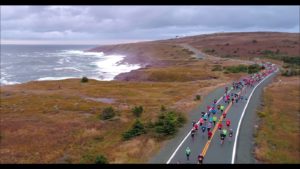
Oct, 20, 2019 – St. John’s, N.L.
With stunning views of the Atlantic Ocean, it’s not hard to understand why Cape to Cabot has sold out every year since its inception. The undulating point-to-point race in Newfoundland and Labrador is 20K, beginning at Cape Spear and finishing at Signal Hill – Cabot Tower with a passage through St. John’s (including Water Street, the oldest street in North America).
Cape Spear, the start line location, is the easternmost point in Canada and North America atop a rugged cliff and features the province’s oldest lighthouse. Like the New York City Marathon and Boston Marathon, and because there’s no parking at Cape Spear, Cape to Cabot runners are bussed to the start line and experience a downhill first section of the race.
The finish, a one-mile climb up Signal Hill, is known as the Munn Mile and is separately tracked as part of your overall finishing time. Just 3K of the race is flat; there are climbs as steep as 10% and the course is net-uphill course by 100m. With less than 500 finishers in 2018, the event is small, yet full of character and history. See you there.
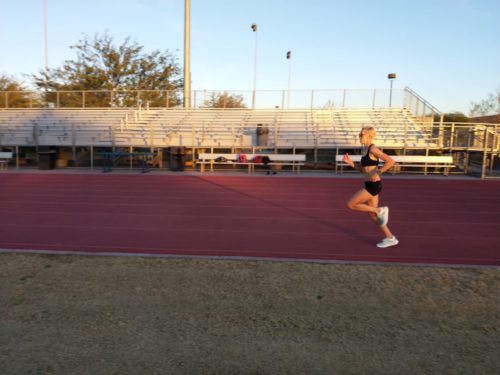






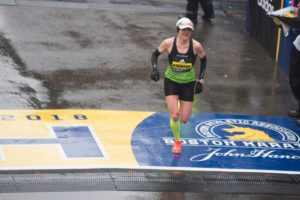

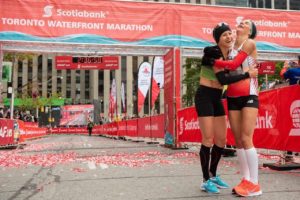











 Our Magazine
Our Magazine
